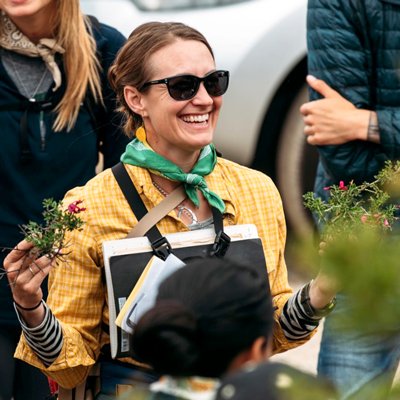SelecTree
Pacific Islands SelecTree is a regional version of the SelecTree tool. It is a collaborative project between The Urban Forest Ecosystem Institute, California Polytechnic- San Luis Obispo, The United States Forest Service and Smart Trees Pacific.
SelecTree is an interactive tree selection guide that allows users to browse urban trees based on their characteristics and site requirements. This tool is based on a robust set of criteria that can be filtered and sorted to determine the “right tree for the right place”. After choosing condition, SelecTree produces a list of urban trees that fit the parameters.
SelecTree was originally created by researchers out of the Urban Forest Ecosystems Institute at California Polytechnic University for the State of California. The project was very successful in its first years and is widely used by community members, government land agencies, and arborists to guide in urban tree selection. The project was further expanded to include an interactive “Nursery Connections” map to help locate retail providers as well as an Urban Tree Key to help identify trees in the field.
We are dedicated to supporting the goal of this project to create a publicly accessible urban tree tool for Hawaii, as well as to lay a foundation for expanding the tool for use in other Pacific Islands such as Guam. This tool will provide a vital resource to our Citizen Forester project, to our partners of the Kaulunani Urban and Community Forestry Advisory Council, and to local stakeholders in the arboricultural and urban forestry community. It will also help to fulfill goals of the State of Hawaii’s Forest Action Plan to create urban forest technology tools.
How is Pacific SelecTree Used?
Pacific Islands SelecTree is available for use by everyone and has so many applications! For example:
Homeowners can use SelecTree to pick an accent tree that perfectly matches their backyard theme.
Urban planners can use SelecTree when designing parks and neighborhoods that showcase native species and avoid invasive species.
City workers can search for and select trees that won’t interfere with public utilities or block intersections.
Sortable characteristics can help beginning gardeners choose a tree species that doesn’t attract pests and is low maintenance.
Permaculture enthusiasts can select tree species that provide edible fruits or decorative flowers.
Educators can search for trees that have culture significance to plant in their display gardens.
*SelecTree intentionally includes profiles on invasive species to provide accurate, transparent information while discouraging the use of problematic species
Dr. Matt Ritter has taught tropical botany at the National Tropical Botanical Garden on Kauai since 2006. He’s currently a Professor of Botany at Cal Poly in San Luis Obispo, California. He’s passionate about trees, urban forestry, understanding more about invasive plants, and the deep cultural connection between people and plants. He has authored numerous scientific papers and A Californian’s Guide to the Trees Among Us, the state’s most popular natural history guide to the urban forest. He is the California Coordinator of the American Forests Big Tree Registry. He has won the Cal Poly Excellence in Teaching Award and the Western Chapter International Society of Arboriculture R. W. Harris Award for Excellence in Education. He is an avid woodworker and gardener.
Dr. Jenn Yost is a professor of botany at Cal Poly, San Luis Obispo and has been bringing students to Hawaii to learn tropical botany since 2014. Jenn studies plant evolution, trees in the urban forest, plant responses to climate change, and invasive species. She sits on the California Urban Forest Council board and is the director of the Cal Poly Hoover Herbarium. She currently collaborates with Smart Trees Pacific to create the Pacific Islands SelecTree website and database the evolution of the California flora.





